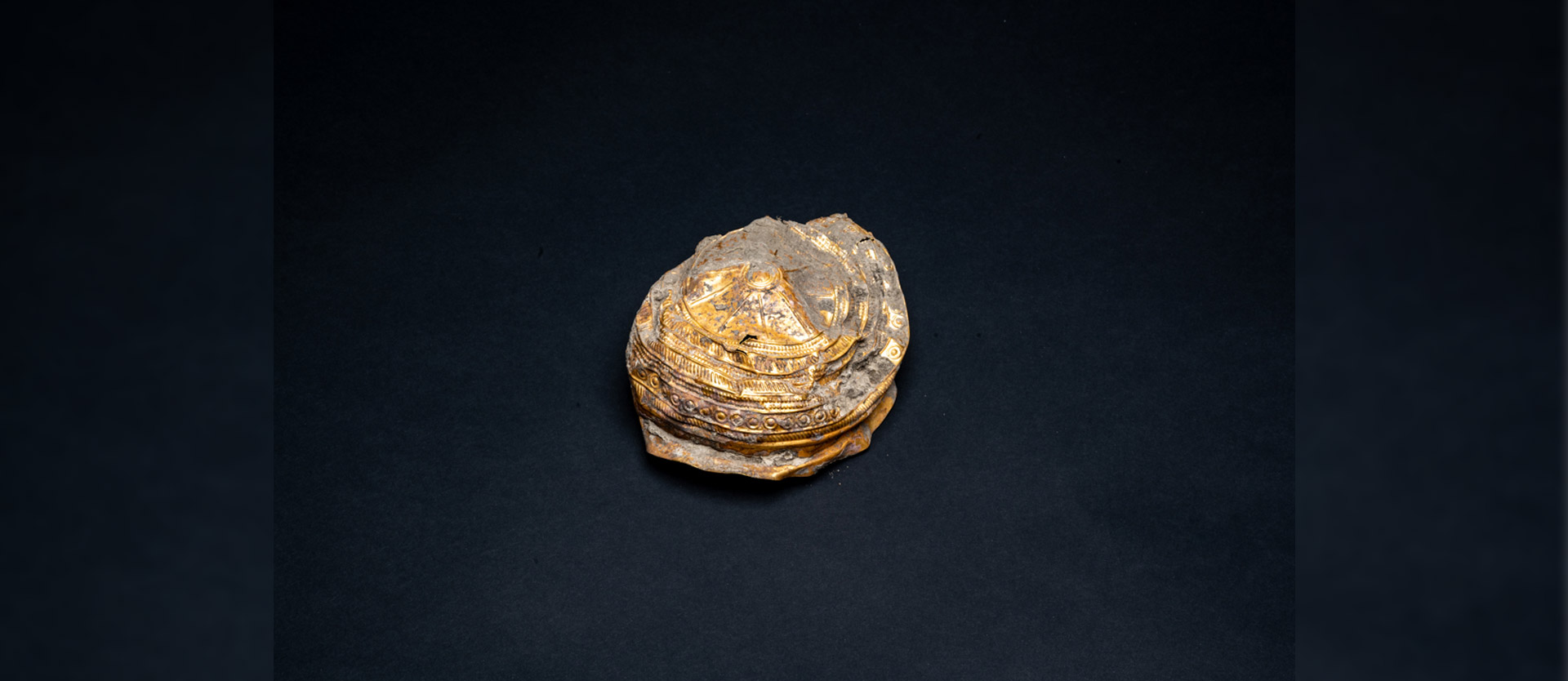
Sun worship in the Alps

Polish archaeologist Dr. Michał Sip of the University of Vienna has probably made the discovery of a lifetime. While excavating a prehistoric cult site in Ebreichsdorf, Austria, he and his team found a rare gold bowl with a sun motif. "I've worked on several continents, including Egypt and Guatemala, but I've never found anything quite like it," enthuses Michał Sip. "This is the first find of its kind in Austria and only the second east of the Alpine line."
The gold bowl is about five centimeters high and 20 centimeters in diameter. It is made of about 90 percent gold, five percent silver and five percent copper. Inside it, the researchers also found two gold bracelets made of coiled wire.
In Central Europe, only a handful of vessels of this type have been discovered in Spain, France or Switzerland. "More are known from northern Germany, Scandinavia and Denmark because they were made there," the archaeologist explains. According to his estimates, only about thirty such bowls are known in Europe.

The archaeological team led by Dr. Michal Sip found other golden jewelry in Ebreichsdorf like these, intertwined rings.
Between 1300 and 1000 BC, the settlement in what is now Ebreichsdorf was inhabited by a community known as the Urnfield Culture. The name comes from the custom of cremating the dead and placing their ashes in urns. It was the middle and late Bronze Age. People lived by farming and raising livestock. The archaeologists assume that the settlement near Ebreichsdorf was located at a swamp. The bronze objects were probably thrown into the water during religious rituals.
During the Urnfield period, the cult of the sun was already widespread. Spectacular finds like the sun chariot of Trundholm, the sky disk of Nebra or sun motifs on jewelry and cult objects testify to this. The sun representations served not only for religious world views and ritual practices, but also quite profanely as a timekeeper for everyday life. However, a pronounced sun cult developed mainly in Scandinavia, where the winters were long and dark. The find in Lower Austria now shows that cult objects with sun motifs were also used in the Bronze Age Alpine region and possibly even imported from the Nordic countries.












